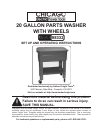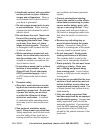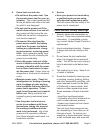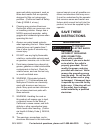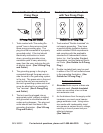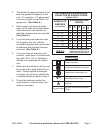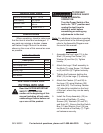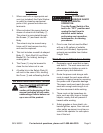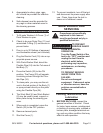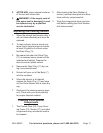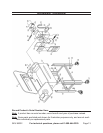
SKU 98332 For technical questions, please call 1-800-444-3353. Page 4
Power tool use and care4.
Do not force the power tool. Use a.
the correct power tool for your ap-
plication. The correct power tool will
do the job better and safer at the rate
for which it was designed.
Do not use the power tool if the b.
switch does not turn it on and off.
Any power tool that cannot be con-
trolled with the switch is dangerous
and must be repaired.
Disconnect the plug from the c.
power source and/or the battery
pack from the power tool before
making any adjustments, chang-
ing accessories, or storing power
tools. Such preventive safety mea-
sures reduce the risk of starting the
power tool accidentally.
Store idle power tools out of the d.
reach of children and do not allow
persons unfamiliar with the power
tool or these instructions to oper-
ate the power tool. Power tools are
dangerous in the hands of untrained
users.
Maintain power tools. Check for e.
misalignment or binding of moving
parts, breakage of parts and any
other condition that may affect the
power tool’s operation. If dam-
aged, have the power tool repaired
before use. Many accidents are
caused by poorly maintained power
tools.
Use the power tool and acces-f.
sories in accordance with these
instructions, taking into account
the working conditions and the
work to be performed. Use of the
power tool for operations different
from those intended could result in a
hazardous situation.
Service6.
Have your power tool serviced by a.
a qualied repair person using
only identical replacement parts.
This will ensure that the safety of the
power tool is maintained.
Parts Washer Safety Warnings
Maintain labels and nameplates on 1.
the tool. These carry important safety
information. If unreadable or miss-
ing, contact Harbor Freight Tools for a
replacement.
Avoid unintentional starting. Prepare 2.
to begin work before turning on the
tool.
Do not leave the tool unattended 3.
when it is plugged into an electrical
outlet. Turn off the tool, and unplug it
from its electrical outlet before leav-
ing.
This product is not a toy. Keep it out 4.
of reach of children.
Some dust created by cleaning, pow-5.
er sanding, sawing, grinding, drilling,
and other construction activities, con-
tains chemicals known [to the State
of California] to cause cancer, birth
defects or other reproductive harm.
Some examples of these chemicals
are:
-
ment or other masonry products
-
cally treated lumber
Your risk from these exposures var-
ies, depending on how often you do
this type of work. To reduce your
exposure to these chemicals: work in
a well ventilated area, and work with



